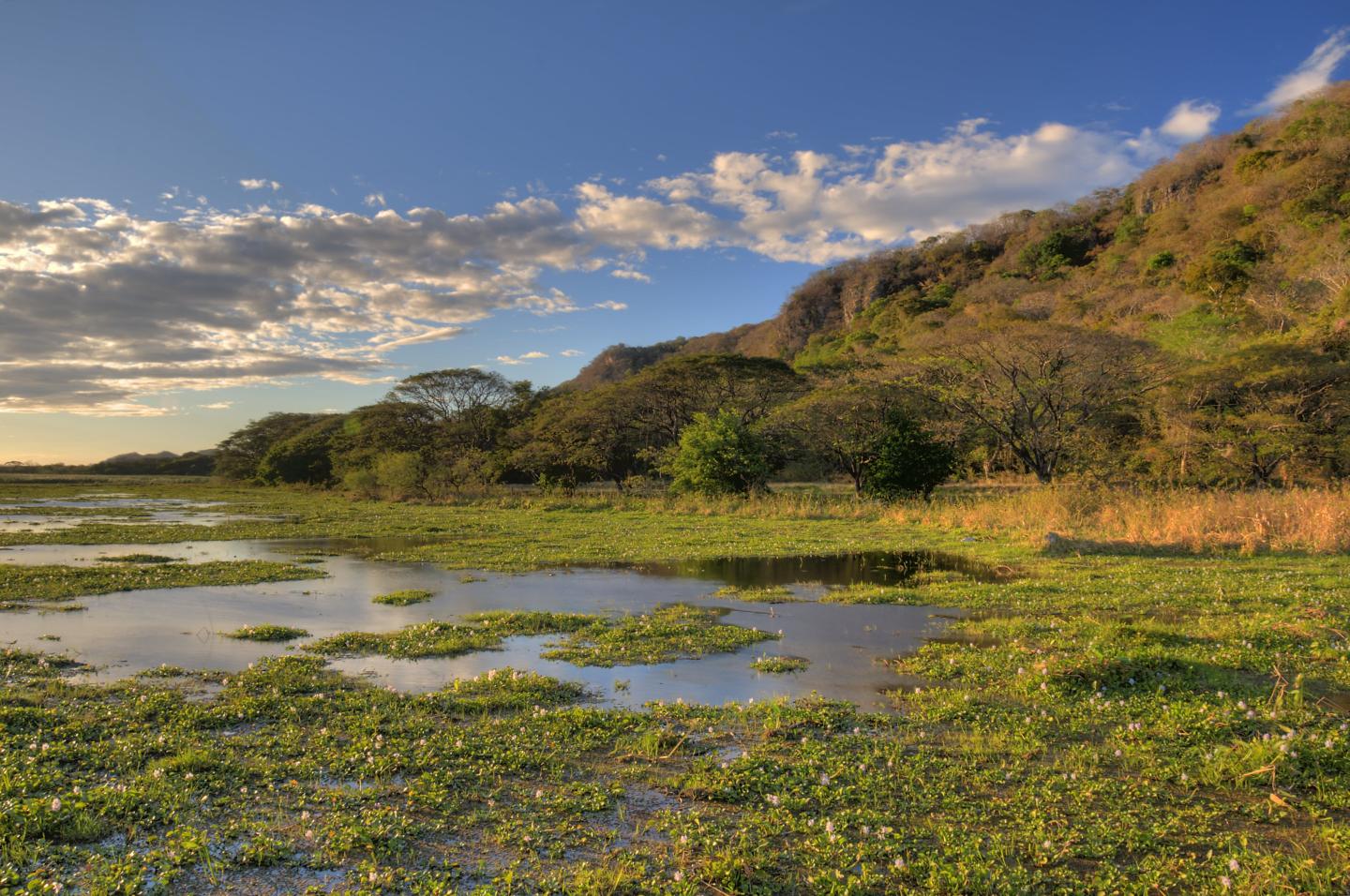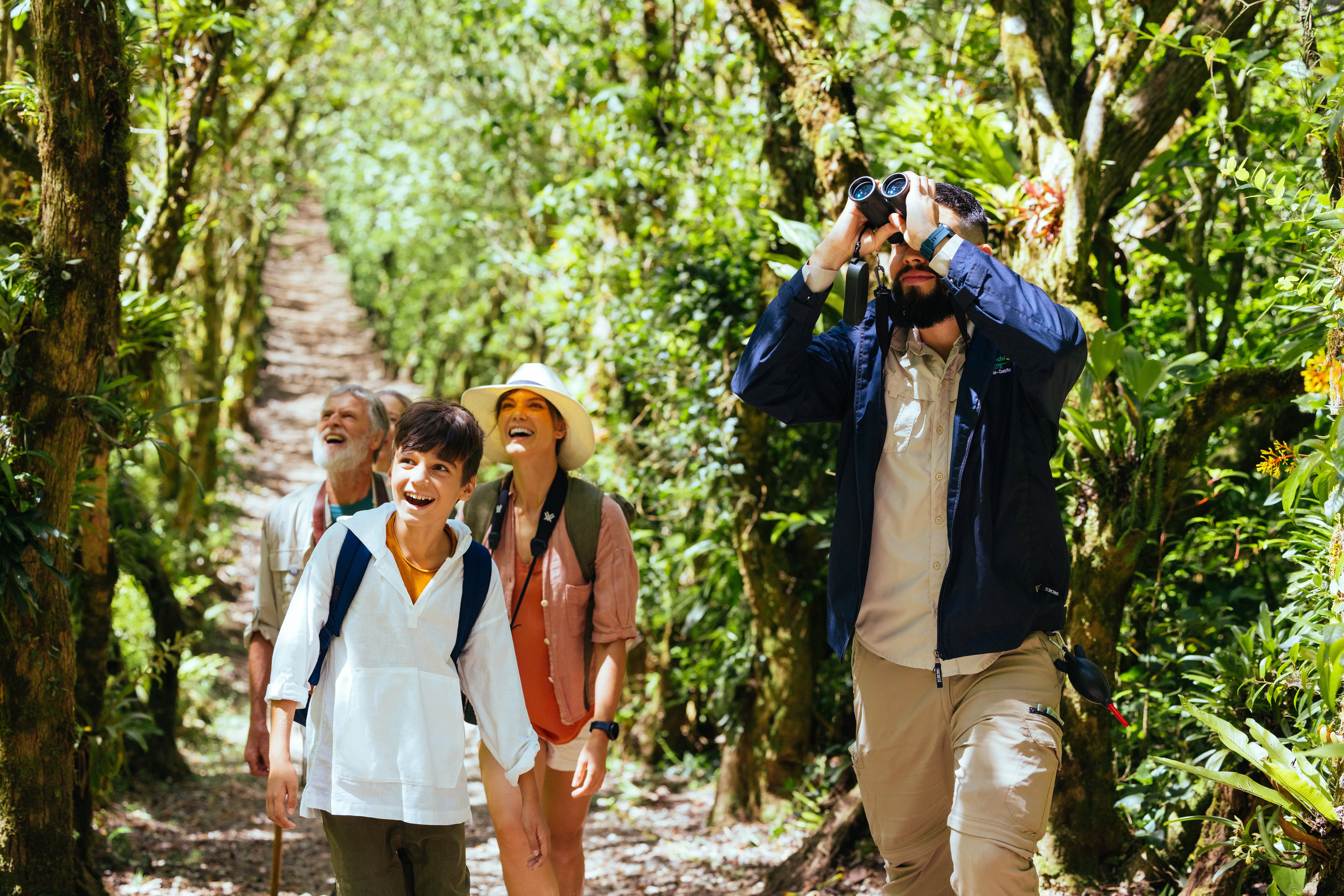palo verde national park
Palo Verde National Park is one of the most biodiverse areas in Costa Rica. It encompasses a rich mosaic of over 15 different natural communities, including the deciduous lowland forest, evergreen forest, flooded forest, deciduous limestone hill forest, grasslands, and mangroves. Wetlands, which represent some 50% of the park’s area, are a sanctuary for thousands of aquatic birds, both migratory and non-migratory. This led to the park being declared a Wetland of Importance under the Global Convention on Wetlands.
Incredible Resources
Over 750 species of plants have been identified, including the palo verde, pochote, Spanish cedar, and the Guanacaste tree. Five of the six species of mangrove present in Costa Rica can be found in the park. The fauna is just as impressive: over 280 species of migratory and non-migratory birds have been documented, some endangered or with shrinking populations, such as the scarlet macaw, jabiru, and great curassow. Additionally, the park is home to amphibians and reptiles, including the frog-eating snake, boa constrictor, South American rattlesnake, coral snake, crocodiles, iguanas, and alligators.
Main Attractions
Various trails, or "Senderos" in Spanish, offer visitors unique experiences:
- Sendero La Roca: A 540-meter circuit leading to a lookout with views of Lake Palo Verde, Río Tempisque, and the Gulf of Nicoya.
- Sendero El Guacayán (Cerros Calizos): A challenging 1,460-meter trail taking adventurous visitors to the Guayacán or El Cactus lookouts for panoramic views of Lake Palo Verde and the Tempisque flatlands.
- Sendero La Cantera: A 1,400-meter journey through nature to a lookout with views of the serpentine Río Tempisque.
- El Mapache: This 710-meter trail offers a glimpse of three different habitats—the lowland deciduous, limestone, and evergreen forests.
- La Venada: A 2,100-meter trail that follows the borders of Lake Palo Verde in some sections.
- Sendero El Pizote: A 650-meter trail that showcases enormous trees and impressive dryland vegetation as visitors ascend.
- La Jacana Boardwalk: An 80-meter walkway above Lake Palo Verde with a special area for birdwatching.
Other Attractions
- Isla Pájaros: A 2.3-hectare island that serves as the nesting ground for at least eight bird species, including Costa Rica’s largest colony of the black-crowned night heron. Located on the Río Tempisque, it can only be accessed by boat.
- Laguna Palo Verde: A birdwatching hotspot from September to March, attracting thousands of herons, egrets, ducks, and northern jacanas, among others. It features a 20-meter boardwalk popular with birdwatchers and researchers.
- Ríos Tempisque y Bebedero: Sections of these rivers form the park's natural boundaries. During high tide, these navigable waterways offer opportunities to observe birds, crocodiles, iguanas, and turtles. Park entrances are available via Chamorro through Puerto Humo and Catalina through El Bebedero.
Access
Visitors can reach the park via Route 1, Interamericana Norte (asphalt highway) to Bagaces. From there, it’s 30 km south on a year-round gravel road. Another entrance is available from Nicoya via Puerto Humo.
hours of operation
contact
+506 2206-5965 Parque Nacional Palo Verde, Bagaces, 50401, Guanacaste, Costa Rica
directions
By land from San José, on the Inter-American Highway north to Bagaces, turn left onto a gravel road and continue south about 20 km to the park entrance. From the entrance continue 10 km to the administrative center (located in the old Hacienda Palo Verde). You can also take Route 27 to Caldera and then Puntarenas and then follow the Inter-American Highway North to Bagaces. You can enter by water via the Tempisque River in the town of Puerto Humo, where you can tour the river in boat rentals to the Puerto Chamorro bridge about 2 km from the administrative area. From the Daniel Oduber Quirós International Airport, drive south on the Inter-American North for about 22 Km from Liberia to Bagaces. Then turn right onto gravel road and continue south about 20 km to the entrance of the Palo Verde National Park. By Bus: Take the San José-Liberia route (which takes about 4 hours), to the Bagaces Pulmitan Liberia stop (2222-1650). From there, take a taxi to the Palo Verde National Park, which takes about 45 minutes.
18332 surface area





